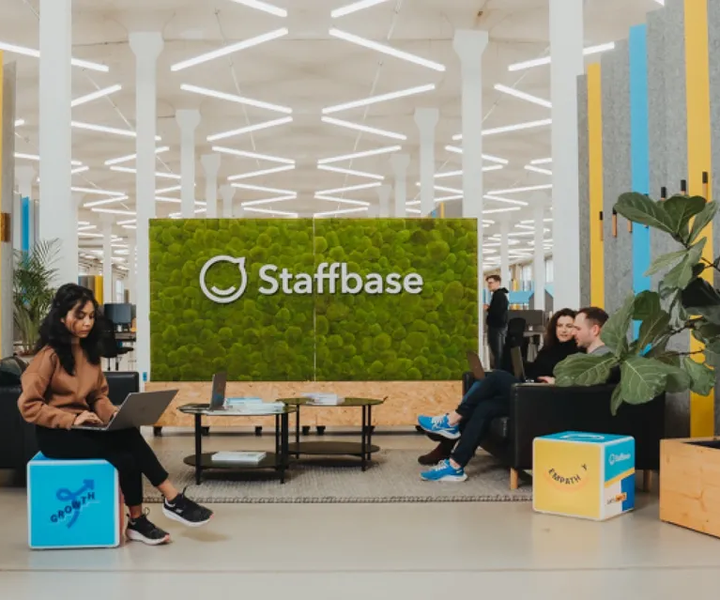3 Easy Ways to Use Gamification in Your Employee Onboarding Process

Thirty one percent of employees have quit a company within the first six months. Of these, a significantly large chunk of employees cited the lack of fun at work and training as the reason they moved out.
Gamification as an onboarding strategy exists to serve two main objectives: to make training fun, and to accelerate the pace of learning. So how effective is it in organizations? And how can corporate trainers make sure that their gamification strategy is a success? Let’s find out.
Why Use Gamification for Onboarding?
Gamification is essentially the use of concepts prevalent in traditional video games to motivate and incentivize users to perform certain tasks. One of the best examples of gamification in everyday life is the use of ‘loyalty points’ at retail stores. By rewarding consumers with virtual points each time they purchase, businesses influence their decision to come back for future purchases. In employee training, such reward points and badges motivate the user to learn and complete the course.
Rewards and badges are not the only gamification elements that you can deploy. A well designed game has other elements like goals and clearly-marked paths to drive the player in a direction that the game wants them to take. Such elements can also be used while designing courses or learning materials since it is possible for the learner to be otherwise distracted during the process.
Finally, it is also known that video game developers deploy music and multimedia elements that help the player focus instead of getting distracted during the game. Onboarding programs that use multimedia as part of the training process to make sure that these elements contribute towards better focus and do not take the learner’s mind away from the actual process.
We’ve collected three easy ways to integrate some fun and games to your onboarding process below!
1. Leveling Up
One of the first things you do while bringing a new employee onboard is to set actionable goals for them to achieve in order to get started on their real job. Goal setting is essentially the HR version of “leveling up”, a gaming technique where a player is required to accomplish a certain number of tasks before they are promoted to the next level.
If your organization makes use of a learning management system to take care of the training process, then establish specific goals within your learning package. For instance, if you are bringing a sales development executive (SDR) on board, their first hour of the learning package could be about refreshing the fundamental sales process. Starting with an easy to achieve goal motivates the employee to push forward and is thus a critical component of gamification.

From a gamification perspective, goal setting can be both active and passive. Active goal setting techniques make use of assessments to ascertain if the employee being onboarded has truly breached their goals or not. There are various ways to assess a learner – simple, objective questionnaires are often the most effective although it is not uncommon for businesses to organize real-life assessments (like calling a prospect or handling a customer support request) to evaluate performance.
Passive goal setting techniques make use of checklists to notify users of the goals they have reached. This is useful for onboarding lessons that may be revisited later. Such passive goal setting techniques are used for lessons related to company culture, management policy and other human resources related topics.
So how effective is goal setting really in an onboarding setup? One study found that nearly 60 percent of organizations do not set any specific goals for employees during the onboarding process. They found that employees from such companies lack a sense of direction and often take as much as a year to completely settle in their role. Another study found that close to 86 percent of employees choose to quit their organization within the first six months in the absence of clear goal setting.
2. Leaderboards
Leaderboards that list out the top performing players are one of the most effective gaming strategies to motivate gamers to keep playing. Studies have shown that introducing leaderboards in games increase the competitiveness of players. Leaderboards, when applied to employee onboarding, can motivate learners to improve their learning efficiency in order to secure a rank in the leaderboard.

To integrate leaderboards to your onboarding program, it is important to objectively state the specific criterion that will go into assessing performance. You could, for instance, state that completing a training course could garner the learner a specific number of points while failing the assessments could bring these points down. It is also crucial to give your new joinees a fair chance by not including points and rankings from employees who have already completed their training program.
Studies show that employees are more competitive when they know who they are competing against. It is worth noting however that each individual learn at their own pace and so it is a good idea to let employees opt-out of the leaderboards if they wish to.
3. Rewards & Incentives
It may be too early to reward a newly joined employee with financial incentives for their performance during the onboarding sessions. But studies tell us that it doesn’t matter whether the rewards offered are real or virtual – human beings derive motivation from rewards regardless of its form.
For your onboarding programs, you can deploy a wide variety of rewards programs. A common strategy is to offer certificates at the completion of the onboarding program. Rewarding the completion of a learning program does not necessarily motivate employees to push harder during the onboarding stage. What works however is to reward employees throughout the onboarding process. You can do this by awarding points and badges for completing assessments and completing tasks that are part of the onboarding program. You may also integrate your rewards and incentives program with the leaderboard for a more effective onboarding process.

Beyond Onboarding
Although gamification is a powerful tool to improve onboarding among employees, it is important to note that the strategy is equally applicable for all kinds of training in the workplace. Technologies change all the time and this makes it important for organizations to upgrade the skills of their employees. With gamification, it is not only possible to make this training process fun, but also more highly efficient.









